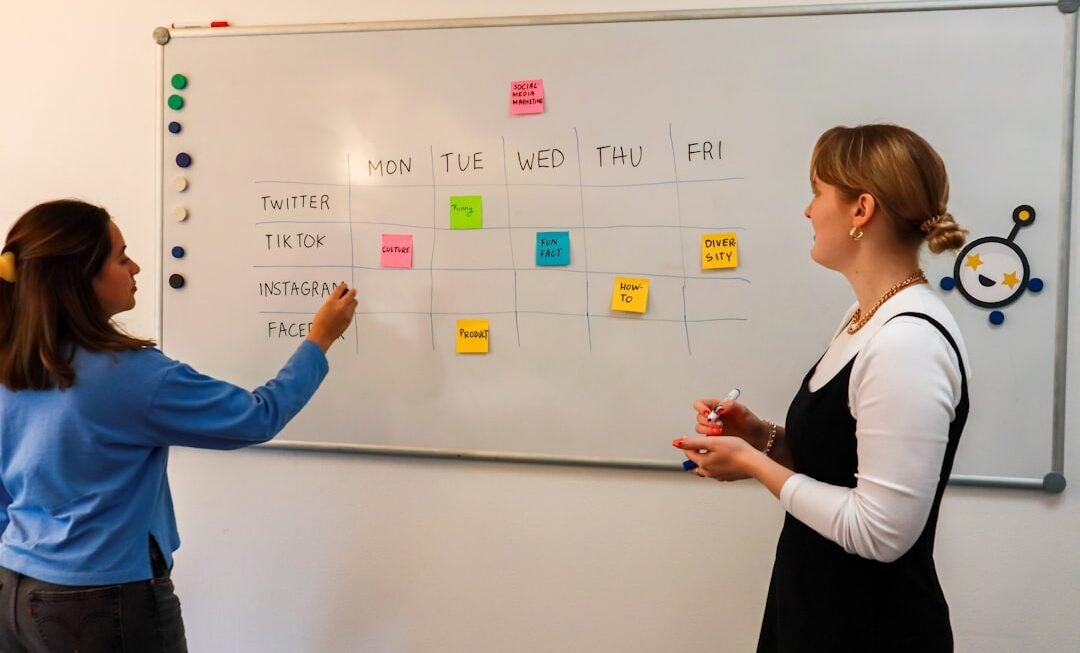Artificial Intelligence (AI) has emerged as a transformative force across various sectors, particularly in enhancing creativity and critical thinking. AI-powered tools are designed to assist individuals in generating innovative ideas, analyzing complex problems, and making informed decisions. These tools leverage machine learning algorithms, natural language processing, and data analytics to provide insights that can augment human cognitive abilities.
By understanding the underlying mechanisms of these technologies, we can appreciate their potential to revolutionize how we approach creative tasks and critical analysis. At the core of AI-powered creativity tools is the ability to process vast amounts of data and identify patterns that may not be immediately apparent to human users. For instance, AI can analyze trends in art, literature, or design, offering suggestions that align with current styles or even predicting future movements.
Similarly, in critical thinking applications, AI can sift through extensive datasets to highlight relevant information, enabling users to make more informed decisions. This synergy between human intuition and machine intelligence creates a fertile ground for innovation and problem-solving.
Key Takeaways
- AI-powered creativity and critical thinking tools can enhance problem-solving and decision-making processes.
- AI can foster creativity and critical thinking by providing new perspectives and insights.
- AI has the potential to enhance creative problem-solving by analyzing data and generating innovative solutions.
- AI can impact critical thinking skills by providing access to vast amounts of information and facilitating analysis and evaluation.
- AI-powered tools in education have the potential to personalize learning experiences and support students in developing creativity and critical thinking skills.
The Role of AI in Fostering Creativity and Critical Thinking
AI plays a pivotal role in fostering creativity by acting as a catalyst for idea generation and exploration. By providing users with diverse perspectives and suggestions, AI tools can help break down mental barriers that often stifle creative thought. For example, platforms like OpenAI’s GPT-3 can generate text prompts that inspire writers or artists to explore new themes or styles.
This interaction not only enhances the creative process but also encourages individuals to think outside conventional frameworks. In the realm of critical thinking, AI serves as an invaluable resource for evaluating arguments and assessing the validity of information. Tools such as IBM Watson can analyze large volumes of text to identify biases, logical fallacies, or unsupported claims.
This capability is particularly crucial in an age where misinformation is rampant. By equipping individuals with the means to critically assess information, AI fosters a more discerning approach to knowledge consumption and decision-making.
How AI Can Enhance Creative Problem-Solving
Creative problem-solving is an essential skill in both personal and professional contexts, and AI can significantly enhance this process. By utilizing algorithms that simulate human-like reasoning, AI tools can propose innovative solutions to complex challenges. For instance, design software powered by AI can generate multiple iterations of a product concept based on user-defined parameters, allowing designers to explore a wider array of possibilities than they might have considered independently.
Moreover, AI can facilitate brainstorming sessions by providing real-time feedback and suggestions based on the ideas generated by participants. This collaborative environment encourages team members to build upon each other’s thoughts, leading to more robust solutions. For example, platforms like Miro integrate AI features that help teams visualize their ideas and identify connections between them, ultimately streamlining the creative problem-solving process.
Exploring the Impact of AI on Critical Thinking Skills
The integration of AI into critical thinking practices has profound implications for how individuals approach analysis and reasoning. One significant impact is the enhancement of analytical skills through data-driven insights. AI tools can process complex datasets and present findings in a digestible format, allowing users to focus on interpretation rather than data collection.
This shift enables individuals to engage more deeply with the material at hand, fostering a more nuanced understanding of issues. Furthermore, AI encourages a more systematic approach to critical thinking by providing frameworks for evaluating arguments and evidence. For instance, tools like Argument Mapping software utilize AI to help users visualize the structure of arguments, making it easier to identify strengths and weaknesses in reasoning.
This structured approach not only aids in developing critical thinking skills but also promotes a culture of intellectual rigor and inquiry.
The Potential of AI-Powered Tools in Education
In the educational landscape, AI-powered tools hold immense potential for enhancing both creativity and critical thinking among students. These tools can personalize learning experiences by adapting content to meet individual needs and preferences. For example, platforms like DreamBox Learning use AI algorithms to tailor math instruction based on a student’s progress and learning style, fostering both creative problem-solving and critical analysis skills.
Moreover, AI can facilitate collaborative learning environments where students engage with peers and educators in meaningful ways. Tools such as Google Classroom incorporate AI features that streamline communication and feedback processes, allowing for more dynamic interactions. By promoting collaboration and creativity in educational settings, AI empowers students to take ownership of their learning journey while honing their critical thinking abilities.
Ethical Considerations in AI-Powered Creativity and Critical Thinking
As with any technological advancement, the integration of AI into creativity and critical thinking raises important ethical considerations. One primary concern is the potential for bias in AI algorithms, which can inadvertently perpetuate stereotypes or reinforce existing inequalities. For instance, if an AI tool is trained on biased datasets, it may produce outputs that reflect those biases, leading to skewed perspectives in creative or analytical tasks.
Additionally, there is the question of intellectual property rights when it comes to AI-generated content. As AI tools become more capable of producing original works—be it art, music, or written content—issues surrounding authorship and ownership become increasingly complex. Educators and creators must navigate these ethical dilemmas carefully to ensure that the benefits of AI are harnessed responsibly while respecting individual rights.
Leveraging AI for Collaborative Creativity and Critical Thinking
Collaboration is a cornerstone of both creativity and critical thinking, and AI can significantly enhance this process by facilitating communication and idea-sharing among diverse groups. Tools like Slack or Microsoft Teams incorporate AI features that help teams manage projects more efficiently by automating routine tasks and providing insights into team dynamics. This allows team members to focus on brainstorming and problem-solving rather than administrative burdens.
Moreover, AI can help bridge gaps between different disciplines by providing interdisciplinary insights that enrich collaborative efforts. For example, an engineering team working on a product design might use AI tools that analyze market trends from various fields—such as psychology or sociology—to inform their creative process. This cross-pollination of ideas fosters a richer collaborative environment where creativity thrives.
The Future of AI-Powered Creativity and Critical Thinking Tools
Looking ahead, the future of AI-powered creativity and critical thinking tools appears promising as advancements in technology continue to unfold. As machine learning algorithms become more sophisticated, we can expect these tools to offer even deeper insights and more nuanced suggestions tailored to individual users’ needs. This evolution will likely lead to a more personalized experience where users can engage with content in ways that resonate with their unique perspectives.
Furthermore, as society becomes increasingly aware of the importance of creativity and critical thinking skills in navigating complex challenges, there will be greater demand for innovative educational solutions powered by AI. Institutions may adopt these tools not only to enhance learning outcomes but also to prepare students for an ever-changing workforce where adaptability and creative problem-solving are paramount.
Overcoming Challenges in Implementing AI-Powered Tools for Creativity and Critical Thinking
Despite the potential benefits of AI-powered tools for creativity and critical thinking, several challenges must be addressed for successful implementation. One significant hurdle is the resistance to change among educators and professionals who may be hesitant to adopt new technologies. Overcoming this resistance requires comprehensive training programs that demonstrate the value of these tools in enhancing existing practices rather than replacing them.
Additionally, ensuring equitable access to AI-powered resources is crucial for maximizing their impact across diverse populations. Disparities in technology access can exacerbate existing inequalities in education and professional development. Policymakers must prioritize initiatives that promote digital literacy and provide resources to underserved communities so that all individuals can benefit from the advantages offered by AI.
Examples of Successful AI-Powered Creativity and Critical Thinking Tools
Several successful examples illustrate the effectiveness of AI-powered tools in enhancing creativity and critical thinking across various domains. In the realm of writing, tools like Grammarly utilize natural language processing algorithms to provide real-time feedback on grammar, style, and clarity. This not only helps writers improve their work but also encourages them to think critically about their writing choices.
In design, platforms like Canva leverage AI to assist users in creating visually appealing graphics with ease. By suggesting layouts, color schemes, and design elements based on user preferences, Canva empowers individuals—regardless of their design background—to engage creatively while honing their visual communication skills.
Empowering Individuals with AI-Powered Creativity and Critical Thinking Skills
Ultimately, the goal of integrating AI into creativity and critical thinking practices is to empower individuals with the skills necessary for success in an increasingly complex world. By providing access to innovative tools that enhance cognitive abilities, we can foster a culture of creativity and inquiry that transcends traditional boundaries. As individuals become more adept at leveraging these technologies, they will be better equipped to tackle challenges creatively while making informed decisions based on critical analysis.
In this evolving landscape, it is essential for educators, professionals, and policymakers to collaborate in developing strategies that promote the responsible use of AI-powered tools. By prioritizing ethical considerations alongside technological advancements, we can ensure that the benefits of these innovations are accessible to all individuals seeking to enhance their creativity and critical thinking skills in meaningful ways.












